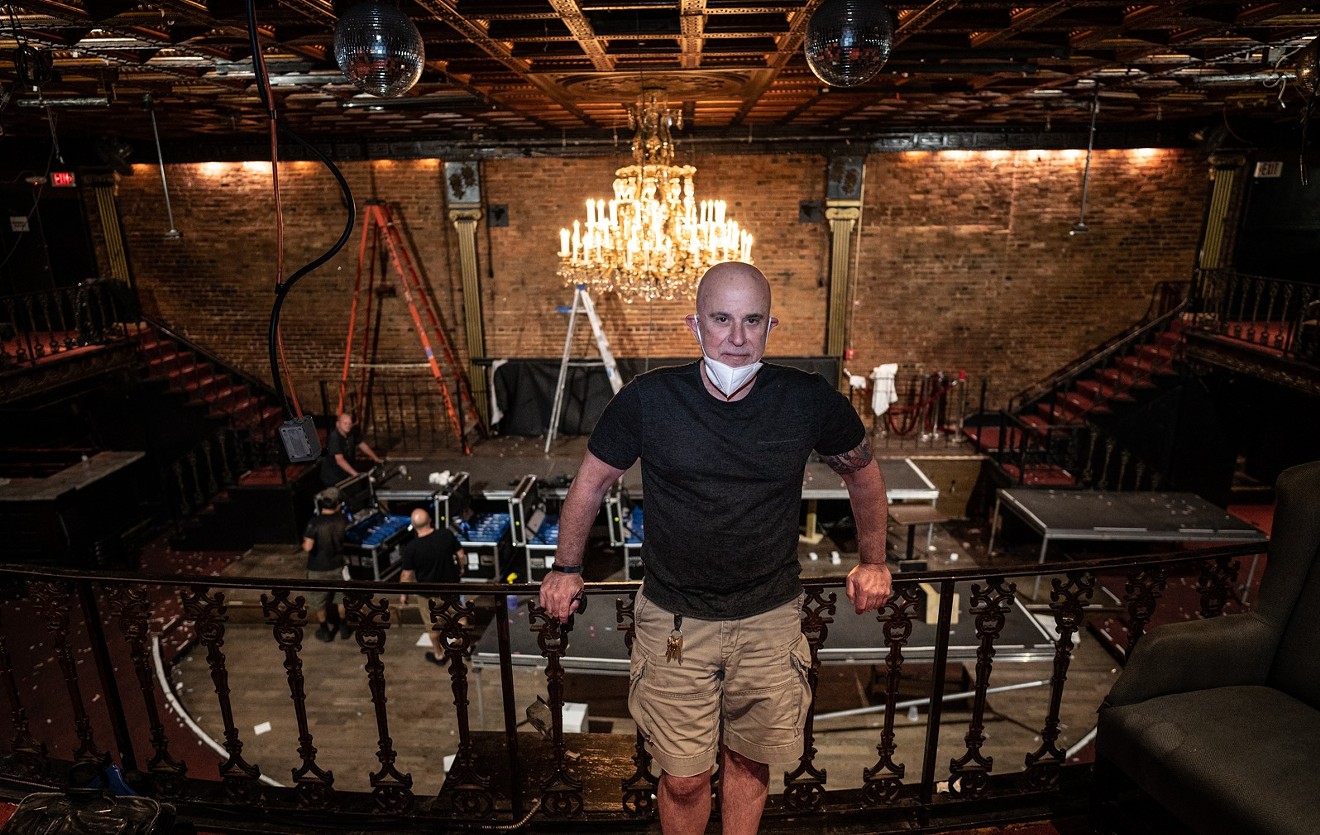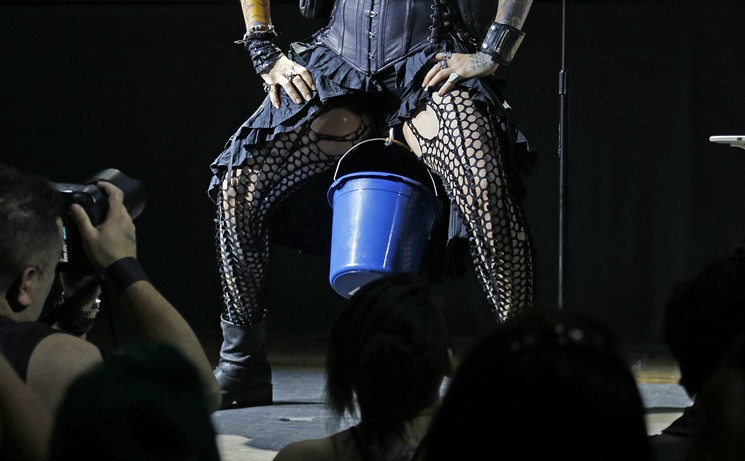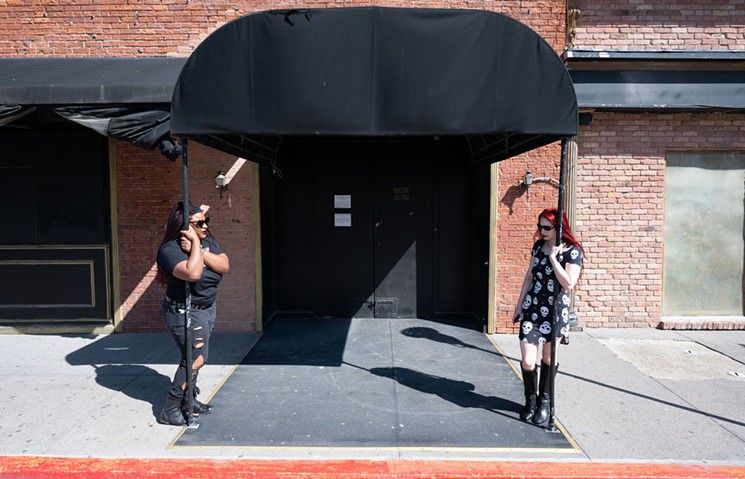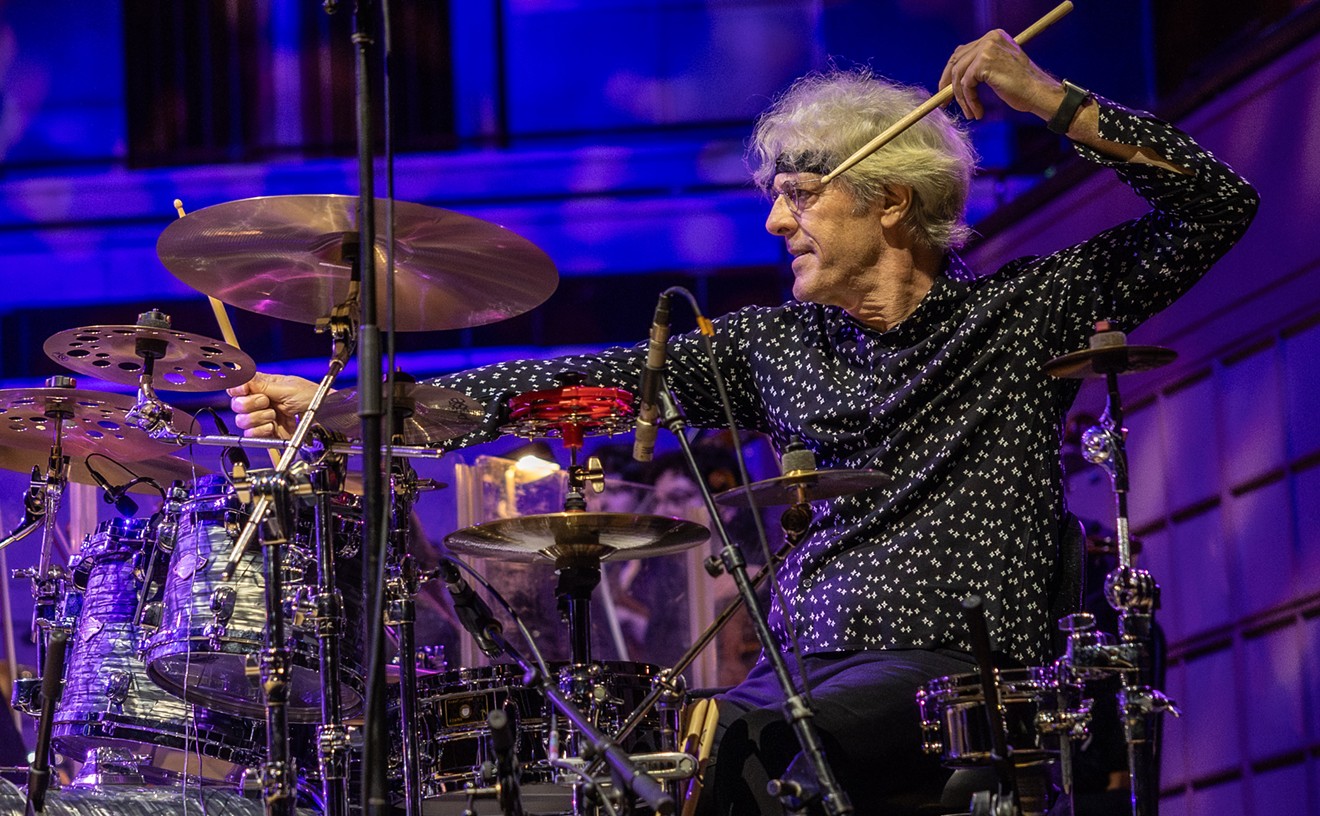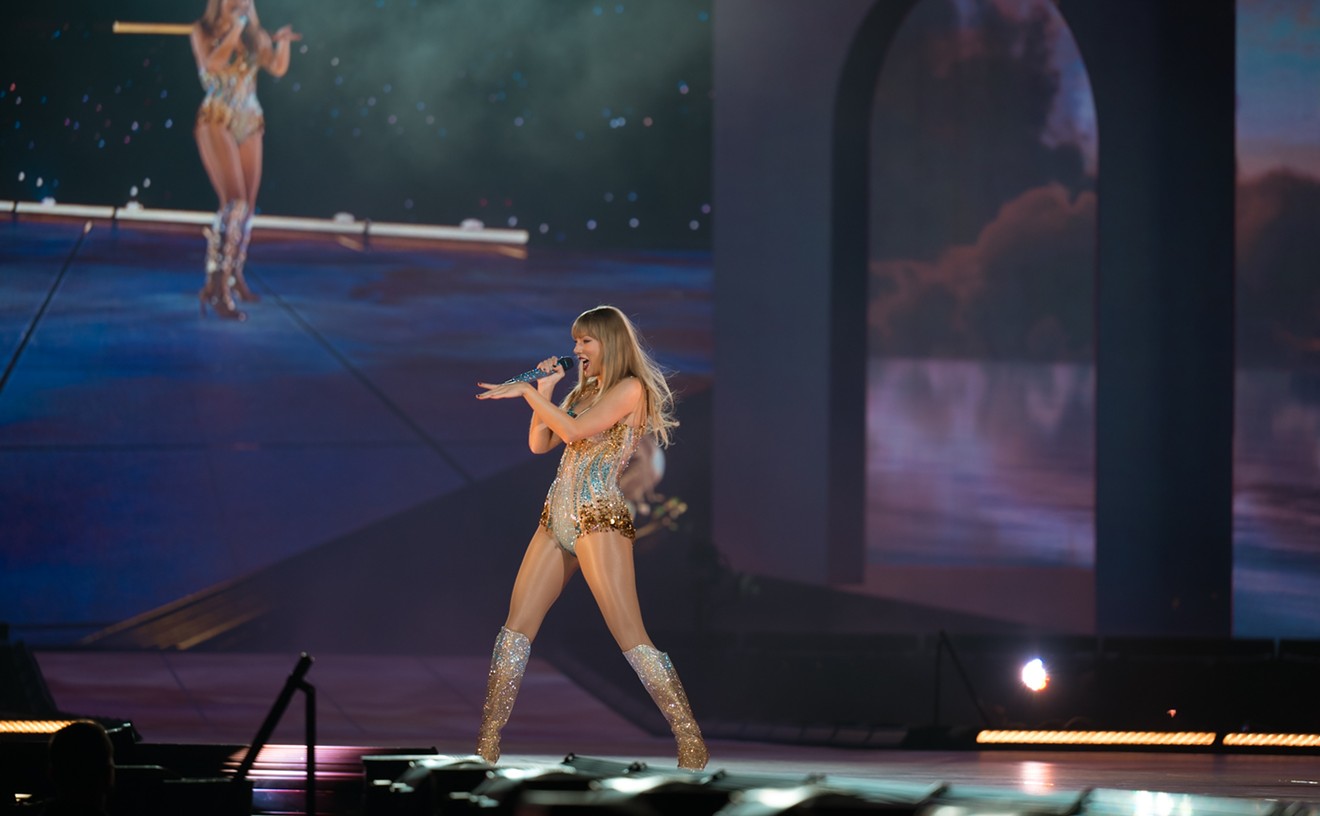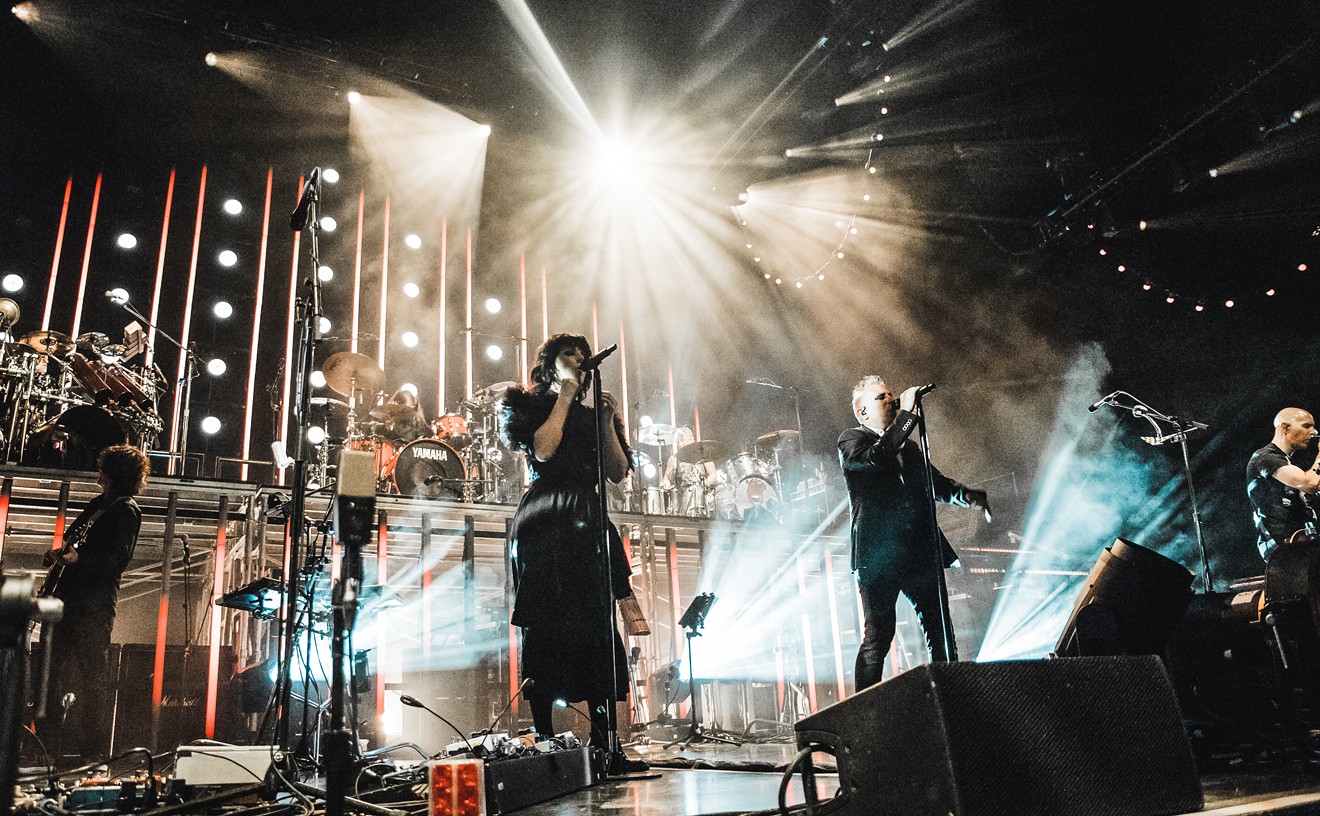Owner Don Nedler and a cadre of staffers and regulars share key parts of the club’s history. To the extent that one can encapsulate nearly three decades of hazy memories, concerts, Goth, Madonna and Dennis Rodman, here is an oral history of the Lizard Lounge.
The Beginning
Nedler: I remember the first night I was sitting [in the Lizard Lounge] as the owner in late October 1991. I looked around, and I knew this place was special. It was everything you ever wanted — close to Deep Ellum, a chandelier, two parking lots. It fit the criteria for a successful nightclub. I thought we’d have a good five-year run.
At first, we were mostly playing hip-hop and techno. Dallas nightclub history was rooted in the Starck Club, so these people had a level of sophistication that I hadn't really seen. I realized pretty quickly we needed to change. We needed to play more house music, because rave culture was going to explode.
Allen Falkner, regular: The early days of ‘94-’96 were very different, but strangely very much the same. The venue itself hasn’t aged a bit, but the technology was upgraded many times over the years. Also, the same could be said for the people. It’s like every five years or so the faces would change, but the crowd stayed the same. Even the music followed suit.
Nedler: We were 21 and up until 2 a.m. Then at 2, we’d have a line of kids outside. We were able to create raves in a licensed premise. There were so many raves at places like warehouses, and they’d get busted. At Lizard Lounge, we could get a permit to block off Swiss Avenue, and I could put 4,000 people in the 2424 block, and put a stage pretty much under the overpass, and throw events that would bring 4,000 people.
[DJ] Jeff K was the one who put me on to rave culture. He told me, “You gotta check out this guy Moby.” In the summer of ‘92, we did a series of free concerts on Sunday nights, and we brought him in. The night Moby played, we had 1,000 people inside and 1,000 people in line. He came in to do a sound check, saw the big line, and he knew we couldn’t fit 2,000 people inside. He says, “Why don’t we just do two shows?” So we did. It’s still one of the most memorable things we ever did here.
A few weeks later, we had a date booked with The Prodigy. They were on a string of nine dates, and when they were in Miami, their manager took off with all their money. They had no cash, no plane tickets. So I called Jeff K, and Jeff went to Bill [Wisener]. Bill asked how much money they needed to get from Miami to Dallas, then wrote us a check for $1,750. We hauled ass to the airport and got ‘em here. Their show was mind-boggling. Then, we ended that summer with an outdoor show by House of Pain. I can’t think of a better way to end a summer than with 3,000 people in a parking lot under the freeway singing “Jump Around.”
Going to Church and Dennis Rodman
Nedler: By ‘94, I had a Lizard Lounge in Miami, and I was spending a lot of time out there. A guy offered me $25,000 for the lounge in Dallas, and I almost took it.
I was in Miami with [DJ] Karl Fought, and we saw a DJ called Carlos Menendez. He was incorporating all of this really great '80s music, and I thought it was incredible. The show was called The Church, and I thought, ‘You can create a culture around this.’ Nothing pop, nothing soft. I wanted it to have some balls.
In July 1994, The Church was born in Dallas. It generated the revenue that allowed Lizard Lounge to hobble through a difficult period. We had a big audience quickly. They were loyal. They just wanted you to play their music. They wanted to be in a place where you can be accepted.
That same year, I was in my office when a black Ferrari pulled up. I looked out the window and said, "There’s no fucking way that’s Dennis Rodman.” The people got out, rang the doorbell, and I opened the door for Dennis and Madonna. I had met him a couple of times; he used to roll up here in a pink Harley and just hang out. So he and Madonna came in, and he said, “I heard this place is for sale.” And at the time, it was. I had to jump through millions of hoops with a lawyer, but after six months, we had a deal.
Dennis had put up 50 grand to a title company. Then it was fall 1995, and Dennis got traded to the Bulls. He didn’t end up buying the club. I went after the $50,000, and Dennis had his lawyers cock-blocking me all the way. Over time, we reached an agreement. I was about to acquire the Starck Club, and I told him I’d give him a 25% share. I raised the money and Dennis was my partner. He would come around, bring celebrities, bring the press. He was the best partner, because he never asked me for anything. When I sold the Starck Club, I told Dennis to roll his money into the Lizard Lounge. He didn’t do it, but Dennis and I are still friends to this day.
The Boom
Nedler: 1996 was when we really started getting our feet underneath us. Leo Del Hierro came on board, and he’s the reason we are still here today. He started doing promotions: drink promotions, girls get in free, whatever he could do. We had stopped broadcasting [from the lounge], but Leo wanted to go back on the air. We partnered with Jeff K again, and we started broadcasting on [102.1] The Edge. Then we started booking really good talent.
One day, I got a call from an agent with William Morris. She said, “I have a date with Fatboy Slim. It’s a Tuesday, and it’s $25,000.” I was petrified, but we knew Fatboy Slim was Fatboy Slim. We had to do it. I didn’t think we’d sell 1,000 tickets, but we did. That opened my eyes to, "Hey, we can do anything here."
We forged a relationship with Jeremy Word and [Dallas club owner] Brooke Humphries. They were more aggressive than us, and we did amazing shows together. Armin van Buuren, Deep Dish, Tiesto, Diplo. Pick an artist, and they probably played here.
Tommy Hawkins, regular: The first time I went there was 1998. I just turned 18, and I was going to college at [the University of North Texas]. Some of my friends I was LARPing with at the time knew the place, and a bunch of us freshmen went out because it was 18 and up, so it was one of the few clubs you could go to. The girls wanted to dance, and even back then, it was known as a place where you could go dance and not be harassed. That’s held true."The show was called The Church, and I thought, ‘You can create a culture around this.’ Nothing pop. nothing soft. I wanted it to have some balls." – Don Nedler
tweet this
Johnny Funk, DJ/staff member: The first time I went was in 1999, and I got in with a fake ID. I was 17. Back then, they were doing live broadcasts on The Edge. The DJ booth was in the pit — in between the restrooms and the main room — and they had a stage where everyone would congregate and dance. It had two stripper poles, too. After that, I went every weekend throughout my senior year of high school. Just after graduation, I got a job there doing lights on Saturday night.
Hawkins: When I first started going to The Church, it was clique-ish. No one would talk to you if you weren’t dressed like a Goth. But in 2002 and 2003, a lot of clubs closed down, and all these subcultures started coming to The Church. It became this place you could go and be yourself.
A New Millenium
Katie Urby, regular: My first night was a Church night in 2005. I was a baby. There are so many subcultures in DFW, and I think I was hanging out with magicians at the time. They said, "Oh we go to this place called Club Spooky.” I was an 18-year-old trying to make friends, so I got on social media and found out my anime con friends go to the club, and all the LARPers, they all go there, too. It was the one place where I could catch the most friends.
Funk: One of the highlights was Carl Cox [in 2006]. He plays for about an hour, and everyone is just excited to be there. Like, "Wow, it's Carl Cox. The pinnacle of electronic music." For an hour, it stays at that level. Then, all of a sudden, he drops one record, and the bottom of the club falls out and erupts. The crowd went absolutely bananas, and stayed at that next level of crazy for the next hour. That’s the benchmark of DJs: controlling the room like that.
Hawkins: [Dark Cabaret] Singer Voltaire used to do The Church every year. People were crazy about him. One of my friends, “B-Train,” covered one of his songs on YouTube. Voltaire comes to the club [in 2007], and he’s about to do this song when he says, “Where’s B-Train? Get up here, I saw you on YouTube.” Then they did a duet on stage.
Falkner: The first Freaks and Fetish [Ball] was 2009, on my 40th birthday. Honestly, the event was an excuse to bring in friends of mine from all over the world. I think I remember my hangover the next day more than the party. I’m not a heavy drinker, but everyone wanted to have a drink or shot with me. The concept was to bring the suspension crowd together with the fetish crowd and, of course, the Goth industrial regulars of the Church. The merging of those three cultures was absolutely fantastic. Everyone was a little different, but they all enjoyed and appreciated each other.
Urby: The fetish ball was a turning point in my life. I got to meet a lot more of the theatrical people in DFW. That’s where I first started meeting the makeup artists, the people who do suspension, the people who do burlesque. I saw a lot more of the world.
Funk: From 2007-2010, it was difficult to do EDM music in a club. We’d still bring older classic DJs like Paul Oakenfold and Paul Van Dyk, but everything was primarily based on rap and hip hop. Then, about 2010, that all changed.
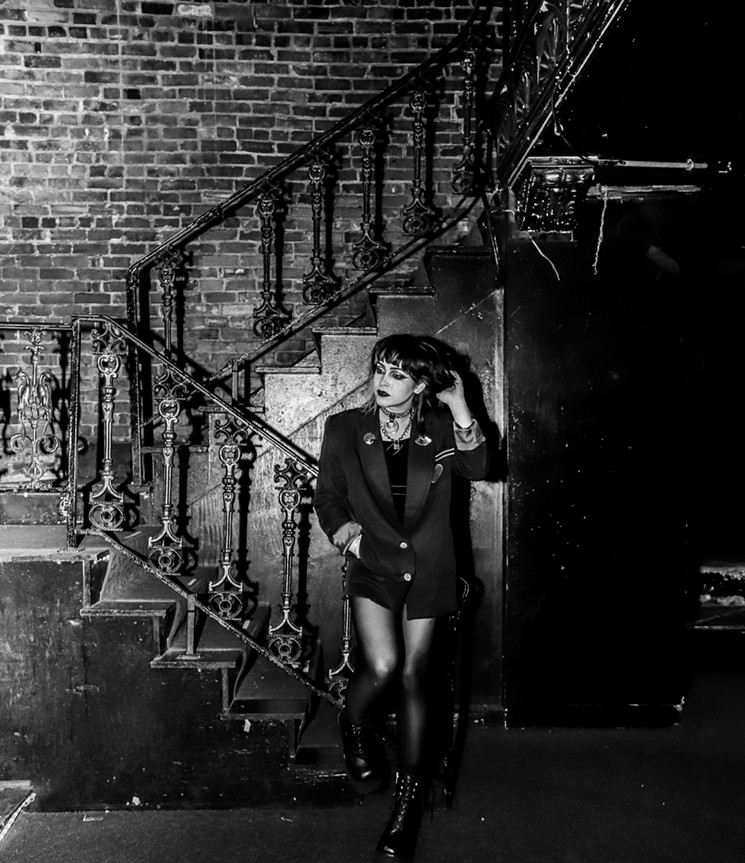
Rosegarden Funeral Party singer and occasional Lizard Lounge DJ Leah Lane stopped by the venue to pay her respects last Friday.
Vera "Velma" Hernandez
The Last 10 Years
Funk: By 2010, the DJ was the show, the focal point. It was a whole different game. “Rave” had a negative connotation, So all the old event promoters started flowing into Lizard Lounge. The crowd became different. You had to try a little harder to wow them. DJs were starting to be put on the stage, and that was a change for me, because I was in a little booth tucked back. LED walls, visuals — all those came in after 2010.
And the rave kids had their own way; they had a world built around going out. That was where the whole festival scene came from: the kids. At Lizard Lounge, we scaled back the festival attitude and brought it to the club. And it was really successful. It still felt the same.
Preston Pannek, regular: I started going regularly in 2010. I still remember [DJ] Steve Aoki popping Champagne bottles all over the crowd and then handing them to us. Then he jumped off the balcony.
Hawkins: A couple years after that, I was working at the lounge and I saw a guy about to jump off the balcony. I tried to run to him, but I could only touch his back right as he jumped off. Then someone said, “Oh, don’t worry. That’s Steve Aoki. He does that.”
Pannek: You’d have DJs come through Dallas that weren’t supposed to play Lizard Lounge, but they stopped by to see their boys, and ended up on stage, too. The biggest loss is Halloween not happening at The Church anymore. You would see big time DJs and athletes hanging out with us, the fans. At the Lizard Lounge, no one was above anybody.
Funk: A lot of the things you see at EDM festivals? You can trace it back to Lizard Lounge.
Pannek: Imagine your local bar, with 1,500 people. That’s what it was. That’s what we lost.
The End?
Nedler: I closed it because I didn't see [the pandemic] as a three-month problem or even a 12-month problem. Until there’s a cure, the concert business is on hold. But we were and still are considering the possibility of another Lizard Lounge. Nothing’s off the table. It ain't over ‘til it’s over.
Pannek: When I heard it was closing, it felt like I took a bullet to the chest. Where else can you see Steve Aoki on a Tuesday night? It didn’t feel real. It still doesn’t.
Hawkins: I remember running into a friend of mine years ago who I hadn’t seen for a while. I guessed that’d it been a year since we’d seen each other; he said it was five. He’d been out of the country that long, but he knew when he got back he could find friends at The Church. I wasn’t the only one who remembered him.
Nedler: I met this guy in 1991, on our opening night. We’ve been friends ever since, and I invited him to one last Sunday night at the lounge. A lot of us got together to see the place off. One last toast, one last Church. We’ve had a good 28 years. I feel pretty good about it.

